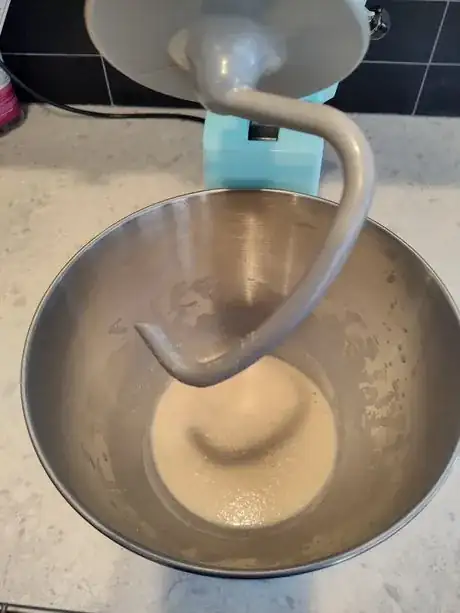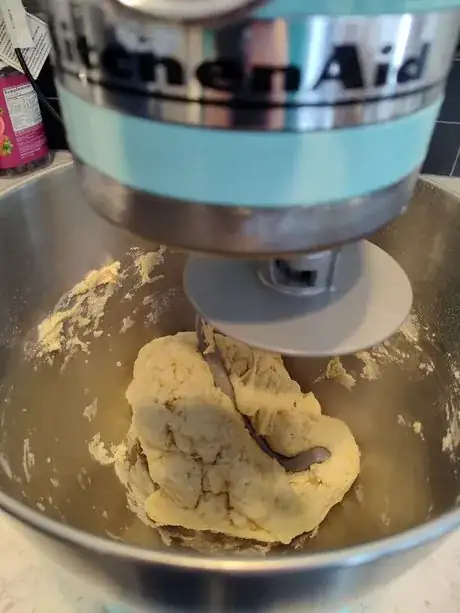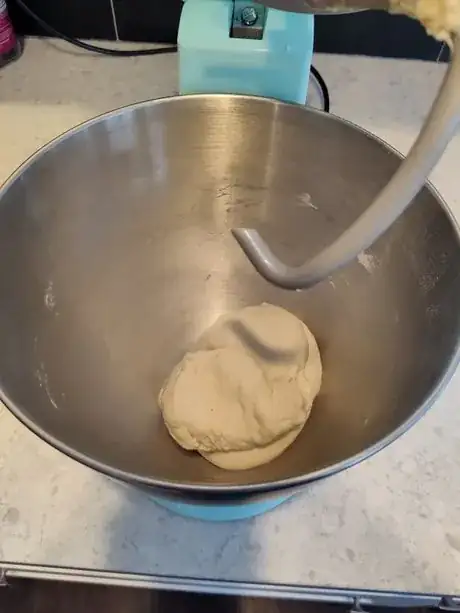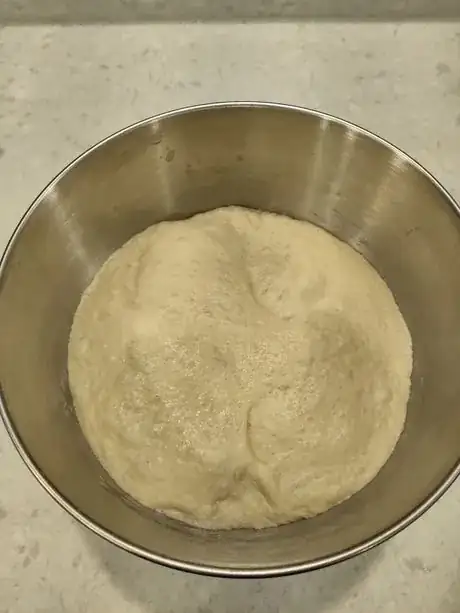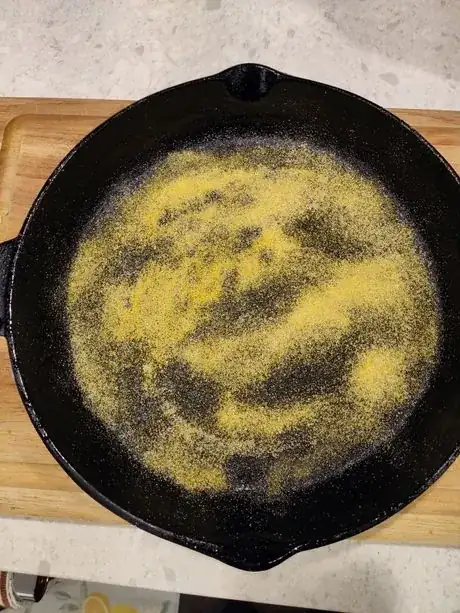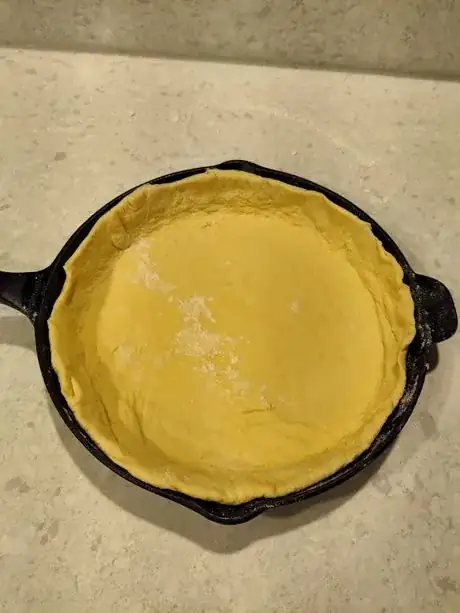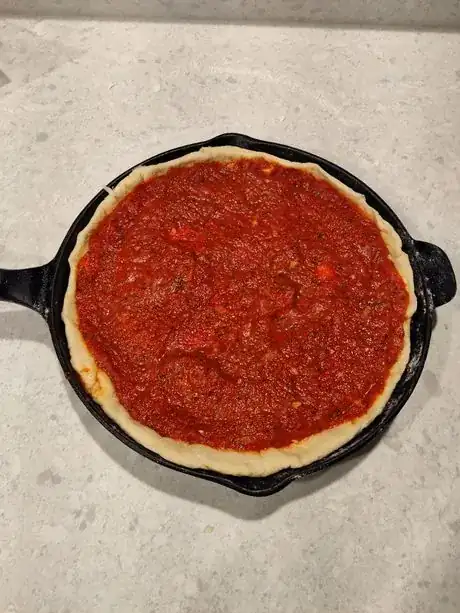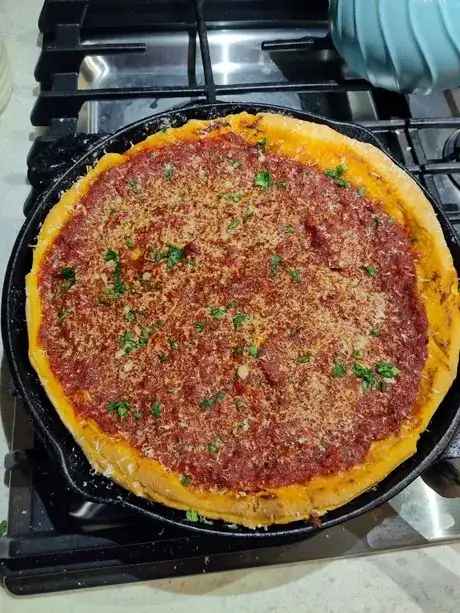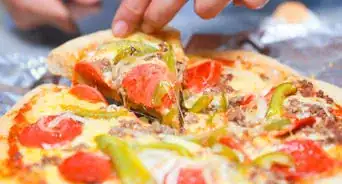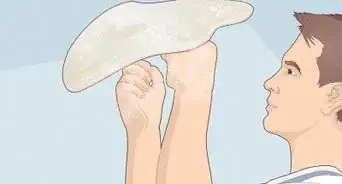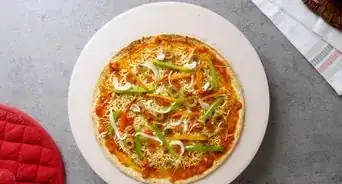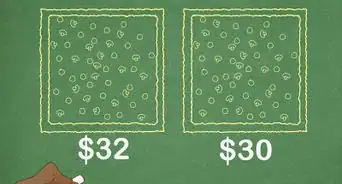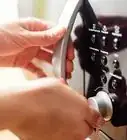wikiHow is a “wiki,” similar to Wikipedia, which means that many of our articles are co-written by multiple authors. To create this article, volunteer authors worked to edit and improve it over time.
This article has been viewed 1,619 times.
Learn more...
What if you had to choose whether to eat pizza or pie? With a Chicago style pizza, you can eat both! That’s because Chicago style pizza has the delicious tomato sauce, melted mozzarella, and spicy pepperonis of a traditional pizza cradled in a pie-shaped, crispy, deep-dish crust that will satisfy even the most voracious appetites. So if you’re craving this hearty Italian delight, put your apron on because this recipe breaks everything down into simple steps for bakers of all skill levels.
Ingredients
Pizza Dough
- 2 ½ teaspoons (12.3mL) dry active yeast
- ¾ cup (187.5g) warm water
- 2 (9.9 mL) teaspoons sugar
- 2–2 ½ cups (562.5 g) bread flour
- 2 tablespoons (29.6mL) olive oil
- 1 ½ teaspoons (7.4mL) salt
Pizza Sauce and Toppings
- 1 tablespoon (14.8mL) olive oil
- 1 tablespoon (14.8mL) cornmeal
- 3 tablespoons (44.4mL) butter
- 1/4 cup (40.g) chopped onions
- 2 cloves of minced garlic
- 28 ounces (793.8g) crushed tomatoes
- Desired pizza toppings
- 1 tablespoon (14.8mL) Italian seasoning or oregano
- 1/4 teaspoon (1.2mL) ground black pepper
- 1 teaspoon (4.9mL) sugar
- 1 teaspoon (4.9mL) salt
- 2 cups (224g) shredded mozzarella
- ¼ cup (25g) freshly grated parmesan cheese
- 1/2 tablespoon (7.4 mL) chopped parsley
Steps
Making the Dough
-
1Activate the yeast. Place the yeast, sugar, and ¼ cup of warm water in an electric mixing bowl. Secure the bread hook attachment and mix the ingredients for a few seconds. Allow the mixture to foam for at least 10 minutes.
- The foam consists of carbon dioxide that the yeast releases as it warms up and consumes the sugar. This release of carbon dioxide makes the dough rise later.
-
2Add the remaining dough ingredients and mix until a ball forms. First, add only the remaining water and the oil. Then, turn the mixer on low, and slowly add 2 cups of bread flour. In the first few minutes, the flour and wet ingredients should be combined to form a sticky piece of dough that is firm enough to pick up in one piece. This can take up to five minutes.
- If the dough is too sticky to form one solid piece after five minutes of mixing, slowly add small pinches of flour until it solidifies.
- If you don't have an electric mixer, you can use a large mixing bowl and flour-covered hands.
Advertisement -
3Allow the mixer to knead the dough for 5–10 minutes.
- Kneading is what gives pizza crust its characteristic chewy texture. The longer you knead the dough, the chewier the crust will be.
- If you don't have an electric mixer, you can knead the dough by hand. Use both hands to push the ball of dough firmly against the counter, then fold the dough over. Repeat this process for 5–10 minutes.
-
4Let the dough rise. Remove the ball of dough, drizzle olive oil around the sides of a mixing bowl, and place the dough back inside. Cover the bowl with plastic wrap and let the dough rise until it is at least double the original size (2–3 hours).
- The bowl can be left on the counter at room temperature or in a warm water bath to allow the dough to rise faster.
Assembling and Baking the Pizza
-
1Preheat your oven to 425 °F (230 °C). Before turning the oven on, move one oven rack to the lowest position first.
- If you have a conventional oven, it is important to bake the pizza on the lowest rack of the oven because the skillet needs to heat up quickly in order for the bottom crust to cook enough to be crispy.
- If you have a convection oven, the temperature of the oven will be uniform, so it doesn't matter which rack you bake the pizza on. But in order for the crust to cook enough, there is an additional step that must be taken to give the bottom crust a head start before the pizza is placed in the oven. This will be explained more once the pizza is assembled.
-
2Start cooking the sauce. First, sauté the chopped onions in a medium saucepot in butter on medium heat for 3 minutes, until soft. Then, add the garlic and sauté for another minute. Finally, add the crushed tomatoes, Italian seasoning, salt, and sugar. Stir everything together and let it heat up for another minute. Afterwards, lower the heat to the lowest setting. Let it simmer and stir occasionally while we move onto the next steps.
- Keep an eye on the garlic because it can burn very easily. It does not need to sauté for longer than a minute. If the garlic turns black, you will want to remove it and try again with another serving of minced garlic. Otherwise, the burnt garlic will make the sauce taste bitter.
-
3Shape your dough into a pizza crust. You will need to flour your work surface and rolling pin to prevent the dough from sticking. Then, place the dough on the counter. Roll the dough into a flat circle that is about 2 inches (5 cm) in diameter larger than your cast iron pan.
- The flattened circle of dough must be bigger than the bottom of the skillet so that it covers the sides and bottom of the skillet.
-
4Place the dough in a cast iron skillet. First, brush olive oil onto the skillet (including the walls) and sprinkle the bottom with cornmeal. Then, place the already-flattened dough into the skillet. Press the dough around the sides so the dough reaches the top of the skillet.
- The olive oil and cornmeal on the skillet are necessary to make the crust super crispy.
- Make sure the dough has an even thickness on the skillet. Often, the corner of the crust where the bottom meets the sides is too thick, and the center of the bottom crust is too thin. Pay extra attention to these areas to make sure the crust has an even thickness. If the center of the bottom crust is thinner than the rest of the crust, the pizza slices will sag at the ends and the toppings will fall off because the toppings and sauce are quite heavy.
-
5Place the toppings on the pizza before the sauce. Spread the shredded mozzarella evenly onto the pizza crust first. Then, add your desired toppings. Lastly, spread the chunky tomato sauce over the cheese and toppings.
- The cheese and toppings go between the crust and the sauce because this deep dish pizza needs to cook for much longer than traditional pizza, and this arrangement prevents the cheese and toppings from burning.
-
6Bake the pizza.
- If you have a conventional oven, place the pizza on the lowest rack and bake for 25–30 minutes.
- If you have a convection oven, you first need to place the skillet with your pizza in it on the stovetop. Cook the pizza on a stove burner on medium heat for about 3 minutes. If your stovetop is not a gas range and takes a few minutes to heat up, then let the pizza cook for about 5 minutes. Then, carefully move the pizza to the preheated oven and bake for 22–25 minutes.
- For either oven type, the pizza is done baking when the top of the crust is golden-brown.
-
7Serve while hot. Remove your delicious pizza from the oven and sprinkle the top with parmesan cheese and parsley. Let it sit for 5 minutes before cutting it.
- Ideally, you should cut the pizza into slices if it'll be eaten immediately. Cutting the pizza long before serving can make the sauce seep into the crust, which will make the crust soggy.
- Leftover pizza can be kept in an airtight container and stored in the refrigerator for up to 3 days.
Things You'll Need
For Making the Dough
- Measuring cups and spoons
- Electric mixer (optional)
- Mixing bowls
- Plastic wrap
For Assembling and Baking the Pizza
- Medium-sized sauce pot
- Wooden spoon or rubber spatula to stir
- Rolling pin
- 12–14 inch (30–36 cm) cast iron skillet
- Pastry brush for basting
- Oven mitts or kitchen towels
- Steel serrated pie server to cut the pizza
